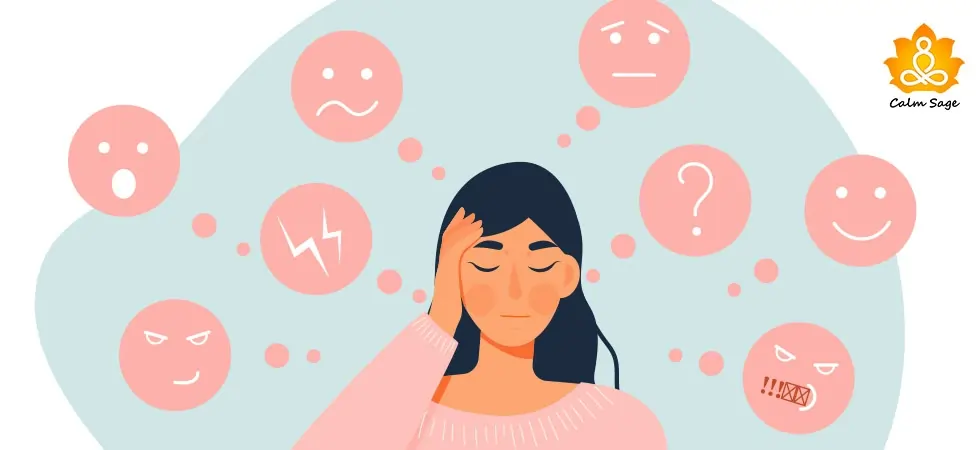Sundown Syndrome: What You Need to Know About it

Sundowning or sundown syndrome is a distressing phenomenon that affects people living with neurological disorders such as Alzheimer’s and Dementia. As the term might suggest, sundowning occurs in the late afternoon and evening, causing confusion, anxiety, hallucinations, and other behavioral changes.
Understanding the causes and triggers of sundowning can help caregivers, medical professionals, and even family members of the affected to improve the quality of life of their loved ones.
In this article, we’re exploring what sundowning is, what causes it, how to treat sundown syndrome, and some practical tips for loved ones of those affected by sundowning. So, keep reading to learn more about the sundown syndrome!
Sundown Syndrome: What Is It?
Sundown syndrome or sundowning is a condition in which a person with cognitive impairment, especially dementia and its forms, experiences increased confusion, agitation, and behavioral changes. These changes occur in the late afternoon or evening hours. The exact cause of this condition is not understood, yet, but it is believed that the condition can be related to circadian rhythms and the body’s internal clock.
These changes can worsen cognitive impairment and cause an increase in anxiety, confusion, hallucinations, paranoia, and dissociation as daylight fades.
Common Behaviors in Sundowning
Sundowning can manifest in different ways and can affect how one acts, feels, and processes things in one’s mind. Common behaviors and thoughts that can be associated with the sundown syndrome include;
- Feeling increasingly restless and agitated
- Becoming aggressive in ways of verbal and physical outbursts
- Becoming increasingly confused and disoriented
- Feeling anxious, fearful, and experiencing paranoia
- Experiencing delusion and hallucinations
- Wanting to walk around aimlessly, putting safety at risk
- Experiencing emotional outbursts such as crying and yelling
The emotional aspect of sundown syndrome can be as distressing as the behavioral aspects. Some common emotional changes that one can experience in sundowning can include;
- Feeling extremely overwhelmed
- Feeling irritable and frustrated
- Experiencing fear and paranoia about their safety
- Experiencing a profound sense of loneliness, even when surrounded by others
What Triggers Sundowning?
Several factors can cause and trigger sundown syndrome, making the condition more difficult to manage. Some common triggers of sundowning can include;
- Physical and mental exhaustion as fatigue can result in confusion and irritability.
- Low light in the evenings as indoor lighting can increase disorientation and anxiety.
- Disruption of routines such as meal times or bedtimes can also trigger sundowning.
- Boredom and lack of mental stimulation can trigger restlessness in the evening.
- Certain medications can also have side effects that increase confusion and paranoia.
- Noise, clutter, and a chaotic environment can also increase symptoms of sundowning.
It’s important to note that sundowning and its episodes can vary from person to person. For some people, sundowning can last two hours, while for others, it can continue into the night.
The frequency and severity of sundown syndrome can change over time, too. Understanding the pattern of sundowning in your loved ones can help you and a professional to come up with effective strategies to manage sundowning symptoms.
How to Treat Sundown Syndrome?
While there is no recorded cure for sundowning, several treatment approaches can help manage the symptoms and improve the quality of life of the ones affected. Here are some options you can consider;
- Light therapy: Exposure to bright light during the day and keeping a well-lit environment in the evening can help regulate the body’s internal clock and avoid anxiety and irritability.
- Medications: In some cases, a professional might prescribe medications to manage specific sundowning symptoms such as depression, anxiety, insomnia, hallucinations, and more. However, it’s important to note that certain medications can have side effects that can worsen the symptoms.
- Physical activity: The one affected by sundown syndrome can also be encouraged to engage in physical activity during the day. This can help reduce restlessness and even improve sleep quality.
- Mental stimulation: A professional can also help the one affected by sundowning by engaging them in mental stimulation. These activities can help maintain cognitive function and reduce boredom.
- Healthy eating: Another way to treat and manage the symptoms of sundown syndrome is by encouraging healthy eating. A well-balanced diet can ensure that nutritional deficiencies are addressed and the overall well-being of the one affected is maintained.
How to Prevent Sundowning?
While it’s not possible to prevent sundowning completely, there are several strategies you can engage in to help your loved one and minimize the risk the symptoms pose.
Here are some strategies that can help prevent sundowning;
- Keep a structured and consistent routine regarding mealtimes, daily activities, and bedtime.
- Ensure that the one affected gets sufficient indoor lighting, especially during the late afternoon and early evening hours.
- Promote the benefits of physical activity and encourage the affected one to exercise to improve overall health and reduce restlessness.
- Avoid naps during the day as excessive daytime sleeping can disrupt nighttime sleeping patterns.
- Provide a balanced diet and ensure that the affected person stays hydrated throughout the day. This will avoid confusion and anxiety in the evening hours.
- Help your loved one identify and manage sources of stress and anxiety.
- Regularly review medications with the physician to make sure that none of the medications contribute greatly to sundowning symptoms.
Tips For Caregivers…
Caregivers of people affected by sundown syndrome can also play a huge role in managing sundowning. Here are some tips for caregivers in managing sundown syndrome;
- Respond to agitation and outbursts with a calm and reassuring tone. This will help reduce anxiety in the one living with the syndrome.
- Gently redirect the patient’s attention and focus on a different activity if you see them becoming agitated, anxious, or confused as the sun sets.
- Offer them verbal or physical reassurance by holding their hands or speaking in soothing tones. This will help them feel calm when their symptoms hit.
- Keep track of any changes you see in their health and behavior, and report them to their therapists and doctors.
- Lastly, know that taking care of someone can take a toll on your health as well. So, join support groups or seek professional help for yourself. This will help you share your experiences and struggles with people who are facing similar challenges.
Wrapping Up…
Sundown syndrome can be a challenging and distressing condition to manage. This condition requires a compassionate and empathetic approach to manage the symptoms and behaviors that arise. By understanding the symptoms, triggers, and treatments to manage sundowning, you can help your loved one and offer them the right support and quality of life they need.
While there might be no singular approach to treating sundown syndrome, a combination of self-help, environmental adjustments, and medical intervention can help reduce the distressing symptoms of sundown syndrome.
With calm, empathy, and active care, you can create a comfortable and safe environment for people living with sundown syndrome, allowing them to be at peace during the evening hours when their symptoms peak.
I hope this article helped! Let me know what you think about this article in the comments section below.
Take Care!




















